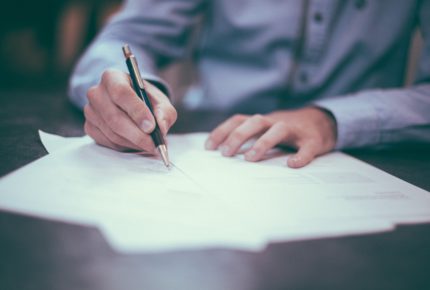

The Internet has fuelled the distribution of adult imagery in the UK just as it has elsewhere in the world. This, of course, is unsurprising. The increased availability of easy and cheap means to share information was bound to further the spread of what, traditionally, was a hidden practice reserved for secret groups and the top shelves of newsagents’ magazine racks.
But one thing that may not have been predicted as easily is that the sharing of intimate images or video would become a matter for the criminal justice system. ‘Revenge porn’ – a term coined to describe such activity where the sharing is unwanted – is doubtless an activity with a long offline history, but the ever-expanding reach of the world wide web has meant that the UK criminal justice system has been forced to take firm action against it in recent years.
What is ‘revenge porn’ under English law?
Revenge porn usually involves one embittered half of a couple distributing intimate photographs or videos of their (usually former) partner without that partner’s consent. There could be many reasons for this, but the act is called ‘revenge porn’ because the partner sharing the material is usually doing so as an act of revenge or ‘pay back’ for something the other partner did wrong, or was at least alleged to have done wrong.
The law, however, does not really care about motive. The law on revenge porn (which is contained for the most part in the Criminal Justice and Courts Act 2015 (CJCA 2015)) concerns itself only with the fact that a private sexual photograph or film was disclosed without the consent of the person who appears in the photograph or film, and that it was disclosed with the intention of causing the person who appears in it distress.
Accordingly, in order to prove that the offence of revenge porn was committed, the prosecution must prove several elements:
- ‘a private sexual photograph or film’
While the definition of a photograph or film is widely understood, section 34 of the CJCA 2015 nonetheless provides a detailed account of what a ‘photograph’ or a ‘film’ is.
The key part of the definition for the purposes of the offence is that there was ‘a still or moving image in any form’. For most accused of committing revenge porn, the nature of the thing shared will not be at issue, but the law still contains detailed guidance in case anyone seeks to claim that the thing they shared was not a ‘photograph or film’. This may occur where, for example, someone makes a GIF image and shares it. GIFs do not readily fit within the everyday definitions of ‘photograph’ or ‘film’, and so the Act has to ensure that the GIF would be still be caught.
Usually, a greater issue is whether the photograph or film was ‘private’ and ‘sexual’ in nature.
According to section 35(2), a photograph or film is ‘private’ if it shows “something that is not of a kind ordinarily seen in public”.
A photograph or film is ‘sexual’ if, according to section 35(3):
- it shows all or part of an individual’s exposed genitals or pubic area,
- it shows something that a reasonable person would consider to be sexual because of its nature, or
- its content, taken as a whole, is such that a reasonable person would consider it to be sexual.
An important point relates to images or video that have been edited, which is covered by section 35(4) of the Act. With photo editing software widely available and ‘deep fakes’ (videos that are so well edited that they look like the real thing) becoming easier to create, it is important to note that the revenge porn offence encompasses these images. If, for example, someone’s face is edited onto a naked body, that will be treated in exactly the same way as if the photograph displayed the actual naked body of the person.
- ‘disclosure’
Section 34 is comprehensive in providing that someone “discloses” something to a person if, by any means, he or she gives or shows it to the person or makes it available to the person.
Furthermore, that section states that something that is given, shown or made available to a person is disclosed:
- whether or not it is given, shown or made available for reward, and
- whether or not it has previously been given, shown or made available to the person.
Critical to understand here is the fact that this provision applies even if the disclosure was electronic, i.e. sent via text messaging, instant messenger services, shared on social media, emailed, or otherwise sent using electronic means.
- ‘without the consent of the person that appears in the photograph or film’
The consent issue is more difficult to prove in revenge porn cases because the CJCA 2015 is not altogether clear on the standards of consent. Section 33(7)(a) states that ‘consent includes general consent covering the disclosure, as well as consent to the particular disclosure’, but the act does not really say anything about situations where more than one person is involved.
If, for example, two people are involved in a sexual act, it is not clear whether the offence has taken place if one person consents to sharing the image and the other does not. That being said, the Act is certainly trying to protect people from unwanted sharing, so it stands to reason that even if two people are in the picture, if consent is not obtained from one person, that one person could claim they have been a victim of revenge porn.
- Intention to cause distress
One thing the prosecution will be trying to prove is the intention described in section 33(1)(b)hat the person who disclosed the photograph or video did so to cause the depicted person distress.
Important here is the fact that the mere possibility of causing distress by disclosing the image is not enough. A person, therefore, cannot be prosecuted for revenge porn if they share the image with a third party genuinely believing that the depicted person wished that to happen.
Similarly, a person cannot be found guilty for revenge porn if they shared the image via, say, a text message that was accidentally sent to the wrong person.
There must be a clear intention to cause distress, and the jury will be the one to decide that question.
Is all disclosure an offence under the CJCA 2015?
The law provides for certain statutory defences to the offence of revenge porn. If one of these defences is found, the person accused will not be found guilty.
Defences to revenge porn are found in sections 32 and 33. It is not an offence to:
- Disclose the picture to the person depicted in the photograph or video
- Disclose the photograph or video for the purposes of preventing, detecting or investigating a crime
- Disclose the photograph or video where the person disclosing reasonably believed that the publication was or would be in the public interest (a provision primarily in existence to protect journalists)
- Disclose a photograph or video where the person disclosing reasonably believed that the image had already been disclosed for reward, and had no reason to believe that that disclosure for reward was made without the consent of the person depicted in the image (a provision that would protect, for example, someone publishing pornography where they have no reason to believe that the person in the images/video did not consent to it being disclosed)
How does the Crown Prosecution Service (CPS) prosecute revenge porn?
Guidance published by the CPS makes clear that any case made against a person under section 33 of the CJCA 2015 must be considered in the light of the general guidance on social media offences.
As with other offences, prosecutors must also consider whether there is sufficient evidence to find guilt, and whether it is actually in the public interest to do so.
When considering public interest, consideration of the specific facts of each case and the impact of the offence on the individual must be taken into account. Additionally, factors like the age and maturity of the alleged perpetrator must also be taken into account, as those under 18 may not appreciate the harm they can cause by such offending, and accordingly it may not be in the public interest to prosecute.
What are the sentences for revenge porn?
Section 33(9) states that if a person is found guilty after being indicted in a criminal trial, they face imprisonment for two years or a fine, or both. Where a person is summarily convicted (i.e. by a magistrate with no trial), the maximum sentence is a period of imprisonment of twelve months or an unlimited fine, or both.
Summary
Extensive research has been done to find out the true extent of revenge porn in the UK. One documentary revealed pervasive occurrences, and one news article claimed revenge porn has been found in every UK city. It is clear that the offence is on the rise and that the criminal justice system is taking it ever more seriously.
For more information about the offence of revenge porn or to get assistance with a case you or someone you know may be involved in, contact Stuart Miller Solicitors today to arrange a consultation.
OUR COMMITMENTS TO YOU:
-
Responsive
A legal expert will consult you within 24 hours of making an enquiry.
-
Empathetic
We will always treat you with trust, understanding and respect.
-
Specialised
Your case will be handled by an expert who specialises in your type of offence.
-
Proactive
We will take early action to end proceedings as soon as it is practically and legally possible to do so.
-
Engaged
You will be kept updated on your case at all times. We will provide a named contact available to answer your questions.
-
Caring
We understand this is a difficult and stressful time for you and your family. Our team will support you every step of the way.
-
Tenacious
We will never give up on your case. We fight tirelessly to get you the best possible outcome.
